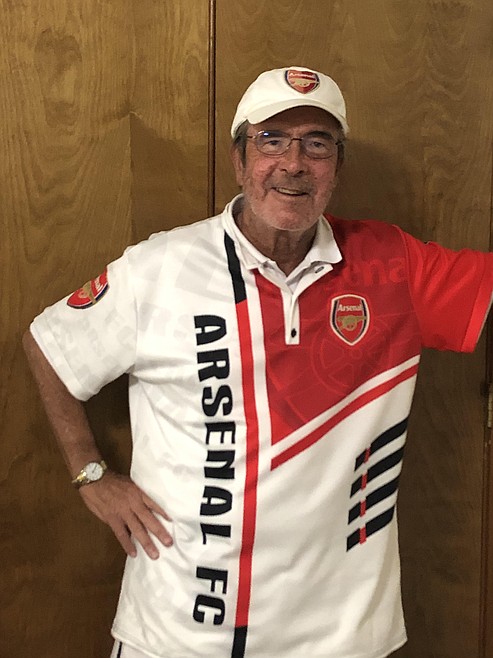THE CHEAP SEATS with STEVE CAMERON: Numbers say to make Zags shoot 3s — but they can still beat you that way
Math class today, kids.
Plus, a scouting report thrown in for no extra charge (unless The Press cleverly begins selling these to interested parties).
First, some numbers that matter.
A lot.
Whatever you want to know about Gonzaga’s future down the road, there are some statistics that can help you out.
These are pretty basic, and …
In fact, if you study them harder than you fiddled with geometry back in high school, you might be able to come up with some scouting on your own.
Ready?
OK, many of you saw Texas Tech employ a unique defensive strategy against the Zags on Saturday morning.
The Red Raiders basically surrounded Drew Timme in the post, crowded Chet Holmgren when he tried to enter that same combat zone — and simply refused to let the Zags’ two big men beat them.
And it worked …
Partially.
Timme was held to a season-low seven points, and Holmgren had to settle for five.
HOWEVER …
Playing all five guys in or near the paint came with a risk.
It left Gonzaga’s perimeter players wide open, again and again.
Tech coach Brad Adams summed up the dilemma.
“We were able to keep Timme and Chet both in check,” Adams said. “I thought we did a good job with those guys — that was our emphasis — but they're such a balanced offensive team, they got the ball to those 3-point shooters and made some shots.”
Yes, they did.
The Zags poured in 13 of 31 tries from behind the arc, a ratio that seems completely out of character for a team has been among the nation’s leaders in two-point field goal percentage each of the last several years.
You can see what Adams was thinking, however.
In the four games that truly mattered prior to facing Tech (Texas, UCLA, Duke, Alabama), the Zags managed 36 percent from deep — but if you subtract Rasir Bolton’s 12-for-21 success rate, that number drops to 33.6.
Further, if you remove Julian Strawther (9 for 23) from the equation, the rest of the Zags managed just 24 percent when firing up 3-pointers.
There’s more…
Coming into the Tech game, point guard Andrew Nembhard had missed 11 consecutive 3-point attempts.
Among other regular rotation players, Anton Watson had made one all year, and Hunter Sallis none at all.
Adams probably had the right idea, but he caught the Zags at the wrong time — after a nine-day layoff during which they worked on perimeter shooting and cutting down on turnovers (they had 10 against Tech, but a couple of those came in the final two minutes).
PRACTICE may not make perfect, but …
It helps.
Nembhard was 4 of 8 from deep, and even his misses looked good.
Meanwhile, Rasir Bolton might as well be shooting to win prizes at a county fair.
Bolton hit 5 of 10 behind the arc against Tech, and that actually knocked DOWN his percentage in Gonzaga’s five games against ranked teams.
Rasir is now 17 for 31 in those matchups, a cool 54.8 percent.
The big difference on Saturday, though, was everyone else.
That group (absent Bolton and Strawther) that had struggled at 24 percent in big games actually found the range against Tech — which admittedly is easier to do when the defense is packed in the lane and letting you stand around with your feet set.
AT ANY rate, the “others” were 7 of 16 (43.8 percent), including a wide-, wide-open killer from Watson when Gonzaga led just 45-40.
We mentioned a scouting report at the beginning of this chat.
Let’s see …
If I were trying to defend the Zags, I’d go with Adams’ theory of making life somewhere between difficult and impossible for Timme and Holmgren — but I’d let my best perimeter defender chase Bolton all over the floor.
The wild card in that strategy is the same one that has gone a long way toward deciding the Zags’ fate when it’s mattered against good teams this season.
Is Nembhard running the game, hitting shots and making the Zags almost unbeatable (as against UCLA)?
Or is he rushing the offense, hurrying his shots and basically settling for poor possessions?
Thus, our math class can only conclude that Andrew Nembhard is the heartbeat of Gonzaga.
If he’s playing with swagger, under control, and drilling shots, there are just too many options to defend.
Class dismissed, boys and girls.
We’ll meet again soon.
Email: scameron@cdapress.com
Steve Cameron’s “Cheap Seats” columns appear in The Press on Mondays, Wednesdays and Fridays. He also writes Zags Tracker, a commentary on Gonzaga basketball which is published weekly during the season.
Steve suggests you take his opinions in the spirit of a Jimmy Buffett song: “Breathe In, Breathe Out, Move On.”

